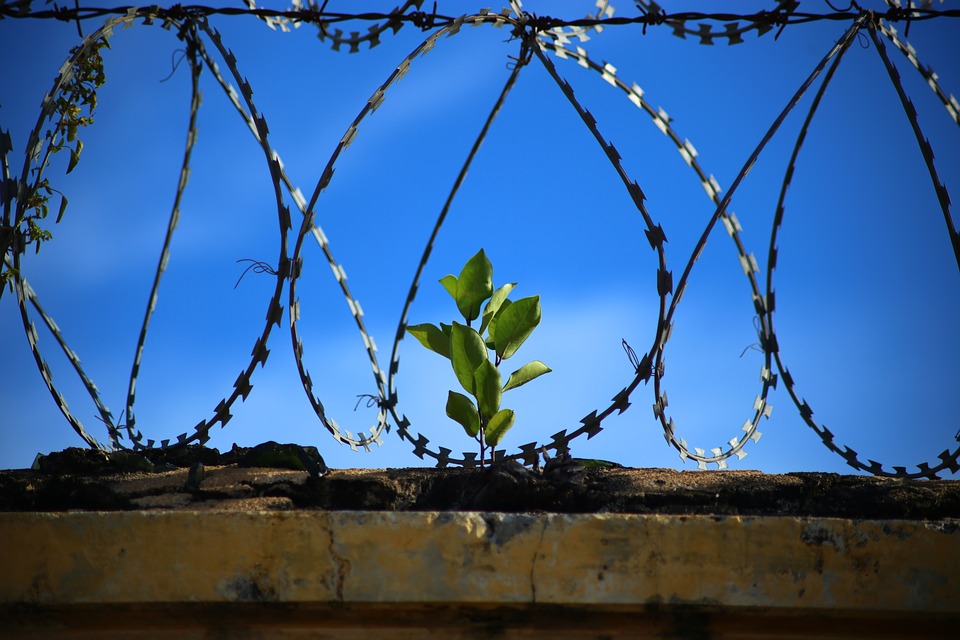Here’s a million dollar word for you: Recidivism. Recidivism is the habitual or repeated lapse into criminal behavior. The most blatant example of recidivism is when a recently-released prisoner commits a second crime with the express intent of landing back in jail. A more subtle case is when a prisoner is released, does not have the skill set to land a job, and ends up back in jail because criminal behavior was the only way to make ends meet.
Over 65% of convicts return to the criminal justice system over time.
In the international effort to spread peace, reducing recidivism is a top priority. Peace is not just about governments, it’s about individuals coming together to build a peaceful society, inside and out.
When one encounters a social justice issue like recidivism, sometimes it can feel so gigantic it’s hard to imagine making a difference. But just as with all gargantuan social issues, it really just comes down to individuals.
There are of course hundreds of social, economic, and psychological reasons for recidivism. Sometimes criminal behavior is enacted out of necessity, making it nearly impossible to correct. Sometimes prisoners don’t have the social skills or job training they need to break out of the criminal cycle. It’s not an easily-solved issue. Meanwhile, US prisons grow more and more overcrowded and the prison-industrial complex develops a life-cycle of its own.
How can the average person make an impact on this hugely convoluted system?
Simple, we can volunteer our time to bring peaceful education systems to prisoners across the country.
Offer a Meditation Class
While meditation isn’t the first thing most people think about when they hear the words “prison rehabilitation,” it is proving to be a successful means of helping prisoners cope with their sentence and life after incarceration.
Meditation can help combat depression, anxiety, withdrawal, and other common states faced by inmates. It gives them a means of release and acceptance.
For help planning out a session, check out this great collection of instructional kits for volunteers leading meditation sessions in prison.
Teach a Music Lesson
Music therapy is useful for prisoners of all ages. Music just moves people on a level deeper than so many other mediums are capable.
It’s difficult to quantify the benefits of arts programs in correctional facilities. Though difficult does not mean impossible. In 2014 the Prison Arts Resource Project compiled a list of studies that provide evidence to the benefits of such programs.
Music itself falls on the “difficult to quantify” spectrum, so it stands to reason that it would thrive in an environment as raw as rehabilitative therapy.
Music rehabilitation programs run the gamut from chamber music to African drumming to chorus singing. Music enhances a prisoner’s inner world, confidence, and social participation. How can that growth not help a person’s reentry into society?
Lead Educational Programs
Finally, one of the most tangible ways to help prisoners rejoin society is by offering educational enrichment and career training.
A little insight from professionals in a variety of fields can be helpful to soon-to-be job hunters. Whether you’re a teacher, business manager, or a marketing professional, chances are you can offer advice about education and how to break into the job market and get hired.
Given enough access to tutoring and educational programs behind bars, inmates can be instrumental in helping to close the skills gap. The skills gap is the disparity between employer expectation and employees’ actual skill levels. The state of Texas, for example, faced a dilemma in 2014 when they realized there was a surplus of jobs in the market that required skilled workers and yet not enough people trained with the skills to fill those jobs.
This sort of situation is ripe for a motivated inmate who has access to educational programs and the deep desire to make it on the outside. Just because an inmate didn’t get a great high school education doesn’t mean they’re not entirely capable of studying up and blowing the competition out of the water. Prison leaves one with plenty of time to hit the books.
Unsurprisingly, inmates who participate in correctional education programs are less likely to be re-incarcerated. Those who study for their GED, take basic adult ed classes, or participate in vocational training are 13% less likely to return to prison. Inmates who take college programs are 16% less likely. In an interview with NPR, senior policy researcher Lois Rand called this “a substantial reduction.”
The opportunities for volunteering in prison education programs are endless. Here are just a few programs that accept volunteers:
Every field has its critics. And yes, there are those who believe that rehabilitation programs don’t actually help recidivism.
Critics of progressive prison rehabilitation programs say that if imprisonment means cushy enrichment programs, it only makes sense that convicts would want to return.
But that is all a matter of perspective. While one person might say that a clean, comfortable prison stay might invite freeloaders, another can argue that a non-traumatic punishment makes for better rehabilitation.
Norway, for example, has one of the most successful prison programs with a recidivism rate of only 20%. Norwegian prison director Are Hoidel explains the rationale behind progressive rehabilitation programs this way: “Every inmates in Norwegian prison are going back to the society. Do you want people who are angry – or people who are rehabilitated?”
In the march toward peace, we definitely want rehabilitated people.
What do you think? Is prison rehabilitation a good use of energy as we work toward peace?


